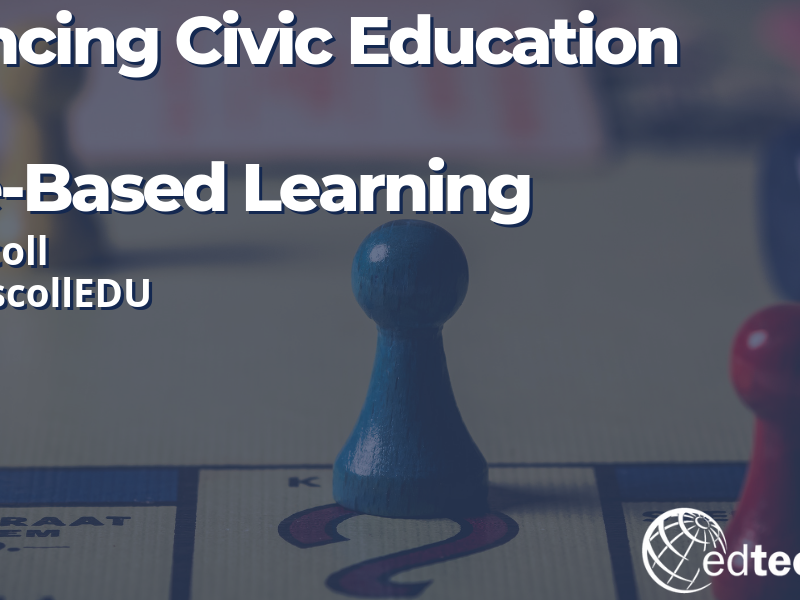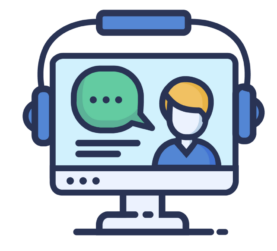The EdTechTeacher Blog
EdTech Resources & Strategies for Teachers
Subscribe to receive updates on our newest blog posts and resources!

Assessment, today there is an abundance of simple, effective and free ways to collect information for learning in your classroom. A new challenge that these tools confront us with is whether we are making the most of the formative assessment data that we collect. Are we using this information effectively to inform our choices about the learning opportunities that we provide for our students?”
Book Creator’s multimodal tools and supports can be used for both teachers and students to create content, demonstrate understanding while building in student voice and choice.
I’ve always enjoyed just sitting and talking to my students. Conversation is such a neat way to get to know and understand a student’s mind and heart. I love hearing their perspective on life, on our classroom, and on the concepts that we are exploring. Having worked with students from Kindergarten through college, I have discovered that taking the time to just listen to students TALK is one of a teacher’s greatest opportunities to help them learn. Recording audio is a wonderful way to take these conversations or student reflections and save them to be heard at a later time! …
Across the country, there is a renewed focus on laws and practices to promote quality civic education, geared toward preparing our students with the skills they need to be active participants in a democracy who are able to access and insert themselves into the democratic decision making process. Shawn talks with Mary Ellen Daneels about transforming Civic Education.
Civic education in the United States has been getting a lot of attention lately. Different than “Government” courses that focus on the structures of government, the goal of a Civics course is to prepare students to participate in democracy and to educate them about the rights and duties of citizenship. One of the driving forces behind the renewed interest in civic education is the changing nature of HOW participation in civic dialogue is now taking place in our society. While “shift happens,” history is often the story of how that shift disrupts traditional patterns of life. When horses were replaced…
Shawn Talks with Project Based Learning (PBL) Expert Andrew Miller. Some changes take more than just making a new lesson or building a new unit. These changes can require a whole new mindset or in some cases building a new classroom culture. Project based Learning is one of these changes. Andrew Miller has been sharing his PBL expertise around the world and stops by today to discuss “Making PBL Work”
Interactive digital activities in Google Slides or Google Drawings are quickly taking the place of paper and pencil activities. They are designed in such a way that students interact with text and images – moving (by dragging and dropping) objects to an appropriate location on a canvas to demonstrate understanding of concepts they’ve learned. As teachers design these activities, they often work to create a stack of moveable objects that can be accessed without the need to copy/paste or duplicate each time. For some students, the multistep commands of copying and pasting can become barriers to success. They require two…
We are experiencing a rising tide of advocacy for high quality civic education across the nation. There is also increasing interest and promising research around the impact that gamification can play in instructional design. Therefore, how might we leverage the power of gamification and game-based learning to enhance civic education? Why Simulations? Let’s start with a proven practice in civic education: student participation in simulations of democratic process and procedures. Providing students with opportunities to participate in civic practices is a powerful way to spark student engagement and deepen civic understanding. Doing so, however, can be quite challenging. The ability…
There is more to educational technology than having the tools and telling students to use them.Being thoughtful about the tasks we have students complete and the proper tools to help them express their learning. Monica Burns shares her expertise on how to prioritize learning and put “Tasks Before Apps.”
English Learners (ELs) come into our classrooms with a wide range of specific and unique needs for language development and content acquisition. They are children whose primary language is not English and who are learning English as a second language. English learners account for more than 9 percent of enrollment in grades K-12 in U.S. schools.¹ The integration of technology allows for great possibilities in meeting the needs of this diverse group of students while providing options for personalizing the user experience. There are many apps and edtech tools available today, but very few are made specifically for EL students.…
Technology has forever changed the way that History classes are taught. Once, not very long ago, history classes relied upon two key sources of information: the teacher and the textbook. Students read the textbook, and then the teachers shared their vast knowledge, usually through lecture. Research assignments were key, but they were limited by the resources that were present in the school library, and the reality was that those resources were often very limited in terms of scope and perspective. That is not what history classes look like today. Not even a little bit. Today the internet allows us to…
A dive right in guide to get students creating There is a lot of buzz around using Augmented and Virtual Reality technology in education, often as a technology on the horizon that is soon to emerge as a powerful classroom tool. The fact is, the tools are currently in place to get students started building with AR/ VR technology NOW and many of the best platforms just happen to be free. So if you are thinking of diving in but have been afraid to take the leap, here is a “Get Started NOW” guide to have students building and sharing…
Storytelling has always been a significant part of education. In learning to tell stories, students explore sequencing, descriptive language, writing, fluency, adding details, and much more. The act of being able to tell and write a cohesive story is a critical communication skill for all students to develop. In addition to telling stories, there is great value in having students illustrate their concepts. While this can certainly be achieved on paper, by exploring digital storytelling tools, students can expand their audience of readers, more easily edit their work, add their own voice recordings for narration, and even collaborate. Stories bring…
In episode 17, Greg sat down with David Lee to dig into Design Thinking. The discussion shifts from the model itself to the importance of shifting culture and mindsets to truly leverage the design thinking process. David is an EdTech Specialist at Singapore American School and the author of Design Thinking in the Classroom. Learn more about his work at his site, David Lee EdTech and follow along with David’s work on Instagram & Twitter.
by Tom Driscoll A core element of personalized learning involves tailoring students’ path and pace to their specific needs and interests. This practice is often coupled with the overarching philosophy of mastery learning, sometimes referred to as competency-based education. One of the most effective ways to personalize the path and pace of student learning is to build a strong foundation of competency based learning in your classroom or institution. Schools that have a strong grasp of student competencies and learning targets, along with clear protocols for students to demonstrate mastery of these competencies, have had much success in designing personalized…
















